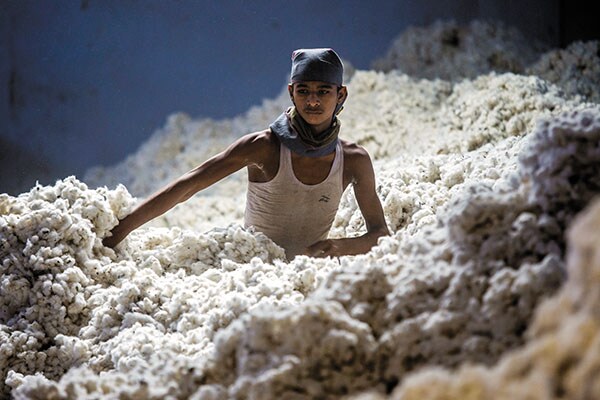The supercycle of commodities is over
But that does not mean that they should be ignored. Demand can pick up in a year and monetary policies of global central banks will determine future trends


India is one of the largest consumers—and producers—of several commodities, particularly precious metals and agri-based ones. It is thus one of the major Asian economies to influence global price movements. Investors, traders, hedgers and fund houses have always dabbled in commodities, either to expand their trading portfolio or to use it as a hedge against inflation.
The dynamics of trading at India’s commodity markets have changed in recent years. Average daily trading volumes have fallen from a peak of about Rs 75,000 crore in late 2012 to about Rs 25,000 crore today. With deterrents like a commodity transaction tax and weak global demand, expect challenging times this year.
At the start of 2014, optimism was at its peak as many felt that the effects of the 2008 financial crisis were over. However, 2015 has started with an atmosphere of dismay [due to falling crude] and the global economy is in a fragile state. In recent months, global commodity trends have been rocked by a whole range of factors, including geopolitical pressures, changing growth dynamics for key global economies and divergent policies of global central banks.
In previous decades we saw the ‘supercycle’ of commodities [from the late 1990s till the 2008 financial crisis] when annual prices of most commodities soared, fuelled by rising demand from Bric economies, the US and eastern Europe. But, since 2012, commodities have been largely out of favour against the backdrop of slowing economic growth in China and other economies, improved supplies and, of late, a strengthening dollar.
In my view, the supercycle of commodities, at this stage, is over. Uncertainties regarding growth of several economies continue to build and the demand for several commodities has waned.
But that does not mean commodities need to be ignored. Demand could pick up in a year’s time. The monetary policies of central bankers will be critical in determining future trends. Further, these policies will lead to raised expectations about economic growth.
The US is the only economy in the developed world that is showing signs of growth with crude down, disposable incomes are rising. The US Federal Reserve has started to tighten its monetary policy, which has aided the strengthening of the dollar, so dollar-denominated commodities will follow a negative path.
On the other hand, economies in Europe and Asia continue to struggle, forcing their central banks to ease monetary policies. This will lead to the build-up of some positive sentiment regarding these economies. The impact will be a tussle between global currencies and trading sentiments. The uncertainties surrounding Greece, and conflicts in Russia-Ukraine and the Middle East are ‘black swan’ events, whose impact is yet to be fully felt.
A few commodities, especially gold, have been negatively correlated with economic growth. Whenever an economy is not faring well, precious metals like gold and silver emerge as strong and safe assets, while offering investors the benefits of diversification in their portfolio. Though gold is off its heady heights of 2011, I suggest investors continue to stay with gold, regardless of specific price points. Here’s a closer look at the major commodities. Image: Getty Image
Image: Getty Image
Cotton being weighed, sorted and processed at a mill in Pilibanga, Rajasthan. Sluggish demand for cotton in 2015 is expected to keep prices in check
Crude oil: Global concern over falling crude prices, with Brent prices at a five-year-low, is not misplaced. Global markets are flooded with ample supplies from Opec nations and others. Rising crude inventories in the US and Opec’s reluctance to cut its output dominate the markets. Prices could consolidate around $50-55 per barrel in the medium term. However any further negative news may correct prices towards $40 per barrel while MCX oil prices (currently at Rs 3,200 per barrel) will head lower towards Rs 2,500 per barrel.
Gold: We suggest staying invested in gold at all times, for one is never sure when this ‘ínsurance’ will work for you. With the US Fed starting to wind up its QE3 (or tapering) programme, and with the strength in the dollar index, physical and investment demand for the yellow metal has started to wane due to declining inflationary trends on the back of falling crude prices. Long-term investors should wait on the sidelines and buy gold on declines.
In 2015, prices would largely depend on policies of major central banks and the global economic scenario. We expect spot gold prices (around $1,204 per ounce) to head towards $1,100 levels, while MCX gold prices (at Rs 27,000 per 10 gm) can correct towards Rs 25,500 levels.
Soybean: In 2014, soybean prices in the international market (CBOT exchange) lost 22 percent. Comfortable supplies in the current season are expected to keep local prices stable between Rs 3,200 to Rs 3,400 per quintal in the first half of 2015. We do not expect any major downside in prices. With improved crop and climate conditions and expectations of yet another year of record output in the US and South America, the overseas market also points towards bearish trends.
Cotton: In 2014, domestic cotton prices fell on expectations of record output, weak overseas markets and global demand concerns. World consumption is expected to recover by 3.8 percent to 24.4 million tonnes. In recent years, China, the world’s largest producer, importer and consumer of cotton, built up huge reserves to meet domestic needs and is unlikely to be an aggressive buyer this year.
Sluggish demand will also keep prices under check. Cotton prices may touch Rs 14,400 per bale during the year on MCX (current price: Rs 15,200 per bale) on the lower side and may see recovery afterwards.
(As told to Salil Panchal)
First Published: Feb 03, 2015, 06:02
Subscribe Now